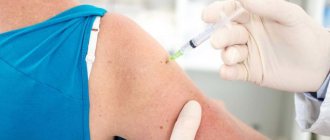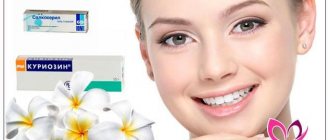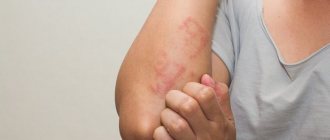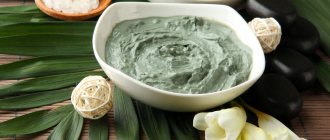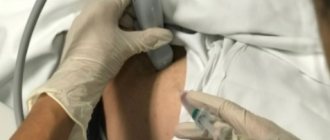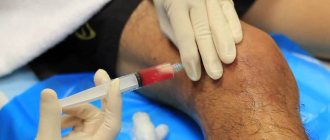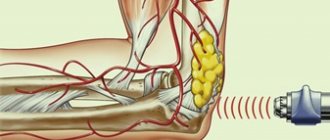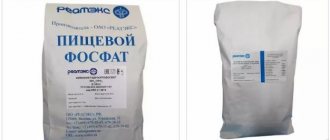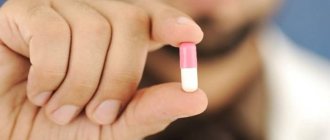Hyaluronic acid for joints is used as a means of complex treatment of various pathologies. It is a naturally occurring organic compound that provides a number of important biological functions necessary for the normal condition of most components of the musculoskeletal system. Today, a significant number of specialized medical clinics use complex treatment with drugs that include hyaluronic acid for joints. The cost of a course of therapy is usually lower than the cost of surgery.
Hyaluronic acid
Hyaluronic acid
When the concentration decreases against the background of impaired production of hyaluronic acid, the nutrition of the cartilage components deteriorates. The result is the development of degenerative-dystrophic processes with the destruction of cartilage. The pathology is called arthrosis.
Treatment
The doctor will help clarify the diagnosis and find out the cause of the pain:
- Rule out inflammatory rheumatological disease (RD).
- Determine the degree of cartilage destruction and the stage of osteoarthritis.
- Select an adequate individual treatment regimen.
The doctor will prescribe an examination, which includes:
- Clinical blood and urine tests
- Laboratory blood test - CRP (C-reactive protein), RF (rheumatoid factor), uric acid - exclude rheumatoid diseases; ALT, AST, creatinine, cholesterol, sugar, total protein - exclude concomitant diseases that affect the selection of treatment and prognosis of the disease.
- X-ray of painful joints (both limbs symmetrically, even if complaints are on one side).
- In case of severe swelling of a particular joint (for example, the knee), ultrasound of the joint or MRI of the joint is performed to exclude traumatic damage to the ligamentous apparatus, menisci, and to clarify the distribution of fluid in the joint.
Treatment of this disease consists of a comprehensive approach to the disease, which includes the use of non-drug and drug methods, and, if necessary, surgical intervention. Although OA is an incurable disease, treatment measures tailored to each patient can reduce pain and inflammation, improve joint movement and slow the progression of the disease.
The basis is proper nutrition
As already mentioned, excess weight (body mass index BMI more than 25 kg/m2) is an indisputable risk factor for the development of osteoarthritis, so these patients need to change their diet. First of all, you need to reduce the amount of fats and carbohydrates in food, increase the consumption of fish, fresh vegetables and fruits. The menu should include foods containing fiber and foods containing sulfur, such as asparagus, garlic, and onions. Sulfur is necessary for building bones, cartilage and connective tissue. It is advisable to avoid eating black pepper, egg yolk, tomatoes, white potatoes, as these foods contain a substance called solanine. Solanine interferes with the function of enzymes in muscles and can cause pain and discomfort. In addition, meals should be fractional (3-4 times a day), regular (at the same time) and even, the last meal should be no later than 2-3 hours before bedtime. Compliance with these rules should lead to gradual but constant weight loss.
Physical activity
If you have arthrosis of the leg joints, running, jumping and squats, fast walking, especially climbing uphill, carrying heavy objects and participating in competitions are not recommended, since with this type of physical activity a force acting on the joints exceeds the weight of the body, which aggravates the load on the already changed cartilage .
Walking at a calm pace, swimming, cycling and skiing, gymnastics and physical therapy are useful. For patients with osteoarthritis, swimming is the optimal form of physical activity and the best form of sports. In water, the range of motion in the joints is maximum, and the weight load is minimal. If you don’t know how to swim, do it in a water aerobics group: with music, fun, in a group!
Cycling not only improves blood circulation in the joints, maintains muscle tone, but also gives a positive emotional mood. You should avoid riding on uneven terrain if you are not confident on the bike, as falling and bruising will not bring anything useful. A safe way is to exercise on an exercise bike. To get started, 15–20 minutes is enough. training, then the duration of classes can be increased to 40 minutes.
In winter, go skiing more often. Skiing at a calm rhythm is beneficial: due to sliding, the weight load is reduced, blood oxygen saturation improves, and muscles and joints are strengthened.
Physiotherapy
It must be remembered that weight loss measures and physical activity must be combined with physical therapy (physical therapy), carried out taking into account certain rules. Physical therapies play an important role in relieving the symptoms of osteoporosis by improving joint function and increasing endurance and muscle strength. Regular exercise therapy classes lead to a reduction in pain and improvement in joint movements, but it is best to start classes under the guidance of a specialist in physical therapy, for example, in health groups. Physical exercises should be carried out without static loads (sitting, lying down, in the pool). You need to exercise for at least 30–40 minutes a day, 10–15 minutes several times during the day. For osteoarthritis of the knee joints, the main ones are exercises that help strengthen the thigh muscles (for example, raise a straightened leg by 25 cm while lying on your back and hold it for several seconds); exercises aimed at increasing range of motion (“bicycle”); exercises that help improve the general aerobic condition of the muscles (walking on level ground at a moderate pace). You need to start walking from a distance that does not cause pain, and gradually increase the duration of walking to 30-60 minutes five to seven days a week). Patients should also be aware of the peculiarities of the motor regime for osteoarthritis, the main principle of which is to unload the affected joint. Long walking, standing, and frequent climbing of stairs are not recommended.
When is it used?
Hyaluronic acid, as monotherapy or in combination with other drugs, is prescribed by a doctor to treat several pathological conditions:
- Arthrosis is a degenerative-dystrophic pathology, accompanied by the destruction of cartilage due to a violation of their nutrition. It can be of congenital origin, be the result of previous injuries or a long-term inflammatory process, as well as age-related changes in the body of older people. Intra-articular administration of the drug is primarily intended for the treatment of large structures of the musculoskeletal system (knee, hip, elbow joint). Hyaluronic acid for joint pain caused by the degenerative process is the drug of choice for pathogenetic therapy.
- Rehabilitation of the structures of the patient’s musculoskeletal system after surgery, including diagnostic or therapeutic arthroscopy.
- Restoring a functional state after an injury, which also serves as a preventive measure against the subsequent development of arthrosis.
- Age-related changes in the skin, characterized by a decrease in the concentration of hyaluronate, elastic fibers and water in the intercellular substance of the connective tissue, which is manifested by the appearance of wrinkles.
The need for treatment is determined by an orthopedist after a comprehensive examination. It often includes preparations that include hyaluronic acid for joints. The cost of a course of therapy depends on the type of drugs used, their dosage, and the number of injections.
What they say a month after the start of the course of injections
Many patients note that during the first to third weeks after the start of injections, stiffness in the joint gradually decreased. If at the end of the first week 31% of respondents say this, then by the end of the third their number increases to 37%. After completing the treatment of arthrosis and osteoarthritis with this method, the effect persisted for 7-9 months.
As for the pain syndrome, a decrease in pain a month after the first injection was noted by 39% of patients, which is twice as much as in the previous case.
Hyaluronic acid preparations
Hyaluronic acid preparations
Hyaluronic acid preparations for joints today are classified according to several criteria:
- Composition of the drug.
- Dosage form of the drug.
- Manufacturer country.
The type of drug affects how much hyaluronic acid for joints costs in the pharmacy chain.
Types by composition
Depending on the composition of the drug, the active ingredients are divided into:
- Hyaluronic acid and chondroitin for joints is a combination preparation that contains chondroitin, which enhances the physiological and therapeutic effects of glucorunate on cartilage components.
- Collagen and hyaluronic acid for joints is a combination medicine that includes collagen. The organic compound also has a natural origin; it is part of the intercellular substance of connective tissue, therefore preparations with collagen have a greater therapeutic effect on such components as ligaments, capsule, tendons.
- A medicine containing only hyaluronic acid.
The choice of the type of drug is carried out by an orthopedist individually based on the results of an objective study. Any product that contains hyaluronic acid for joints can be purchased with a prescription from a medical specialist.
Product in tablet form
Product in tablet form
Based on medical indications, the medicine hyaluronic acid for joints is selected. The price of the drug and the country of manufacture are also selection criteria.
Interaction with other drugs
According to the instructions for the drugs, manufacturers recommend:
- Interaction with other medications is not desirable; hyaluronic acid should not be mixed with other medications.
- When undergoing complex drug therapy, the compatibility of pharmacological agents is determined by the doctor on an individual basis.
- Particular caution should be exercised when using anticoagulants: a combined course increases the risk of local bleeding at injection sites and subsequent formation of hematomas.
Contraindications
Hyaluronate is a naturally occurring organic compound and is therefore quite well tolerated after parenteral administration or application to the skin. There are several pathological and physiological conditions of the patient’s body that are considered medical contraindications:
- The presence of allergic reactions to any of the components of the drug.
- Childhood.
- Pregnancy and lactation (breastfeeding).
- An autoimmune pathology in which cells of the immune system “erroneously” produce antibodies to tissues, which leads to the development of a specific inflammatory reaction in them. Such diseases include rheumatoid arthritis, ankylosing spondylitis, and rheumatism.
- Inflammatory processes that have an acute course, regardless of nature and location.
- Changes in the skin, which are primarily a contraindication for the use of dosage forms of drugs for external use.
Before prescribing a drug, the doctor must make sure that the patient has no contraindications.
PRP plasma therapy for joints (plasmolifting)
The therapeutic effect of PRP therapy is based on the use of platelets - blood cells that initiate the coagulation process and play a key role in the process of cell regeneration. A study by scientists from the University of Michigan (USA), published in 2010, proved the presence of biologically active cells in platelets, the so-called “Growth Factors”. Six different types of growth factors have been discovered that act on different parts of the body: epithelial growth factor (EGF), vascular endothelial growth factor (VEFG), fibroblast growth factor (FGF), insulin-like growth factor (IFG), transforming growth factor (TGF- β) and platelet-derived growth factor (PFDG). There are other growth factors, but what they all have in common is that they are natural compounds that act as activators of the process of restoration and growth of new tissues in the body, and therefore are actively used to treat various diseases. When plasma of one's own blood, saturated with platelets and growth factors, is introduced into the joints, the process of regeneration of cartilage and articular tissue is launched, and with a course of use, complete restoration of the joint is possible.
Medical invites you to get an injection for joint pain at competitive prices!
reactions
reactions
If signs of negative reactions appear, the possibility of further use of the drug is determined only by the attending physician.
Possible side effects
With strict adherence to the rules of manipulation, side effects can be completely avoided. Specialists at the Yuzhny clinic recommend carefully ensuring that the doctor thoroughly cleans his hands before the injection, puts on gloves and disinfects the injection site. The syringe must also be in individual sterile packaging, and the ampoule with the drug must be hermetically sealed. After the injection, the doctor places a sterile napkin on the joint; in this case, unwanted infectious complications can be avoided.
One of the common mistakes is an incorrectly selected needle, which, when inserted, can damage the periosteum or enter a nerve or vessel. With careful adherence to technique and good knowledge of anatomy, such errors should not occur.
Common adverse reactions to injections of drugs containing hyaluronan are slight swelling at the injection site and slight pain. The patient’s condition can be adequately assessed within two days, when the primary symptom disappears.
Some forms of injection can cause significant swelling, inflammation and increased pain - the so-called pseudoseptic reaction.
